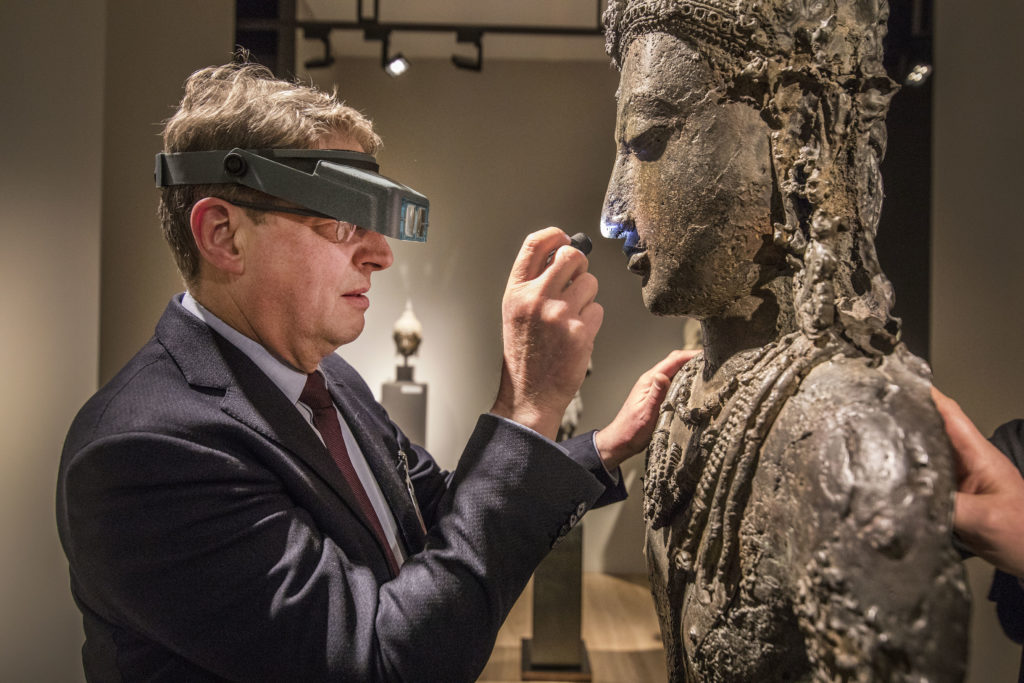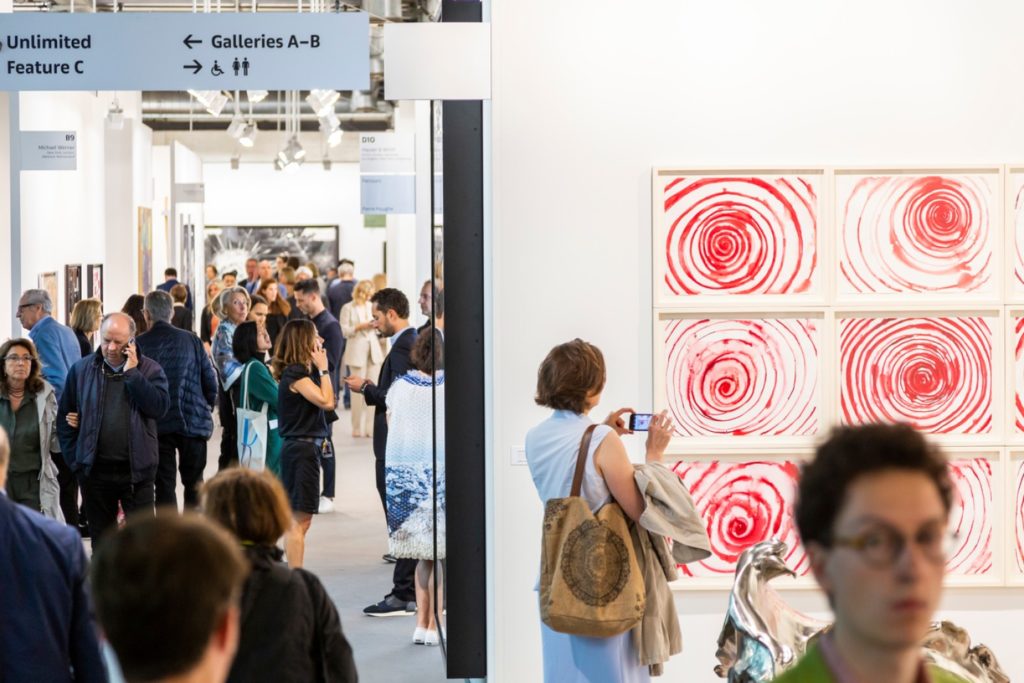Opinion
The Gray Market: 13 Analogies That Helped Make Sense of the Art Business in 2018 (and Other Insights)


Every Monday morning, artnet News brings you The Gray Market. The column decodes important stories from the previous week—and offers unparalleled insight into the inner workings of the art industry in the process.
This week, looking back on a year of the Gray Market through its signature lens…
Longtime readers know that comparisons are central to how I make sense of the world. So for the last Gray Market of 2018, I decided to put together an end-of-year retrospective by way of my favorite analogies from previous editions.
Below are 13 moments of clarity (or at least, absurdity) from my analysis of art-industry events in 2018. Each one is presented in chronological order and headlined with a link to the original post, in case you want to revisit the larger context.
Let’s time travel, shall we?
[Colleen] Dilenschneider, who works extensively with nonprofits and cultural organizations, aggregates studies published by the Journal of Cultural Economics, New Zealand’s Ministry for Culture and Heritage, the UK Council for Museums, Libraries, and Archives, and other credible sources from around the world—all of which strongly suggest that my intuition about the pernicious effects of museum admission fees is as wrong as sexting at a funeral.
She wrote that “if the Brooklyn Museum feels ‘One Basquiat’ is truly worth doing, it should fund the show the old-fashioned way, not by relying on the megabucks owner’s largess.”
Now, I want to be clear about this: I wish Rosenbaum nothing but the best on a personal level. But I’ve tried very, very hard to understand her line of argument, and I remain as dumbfounded by it as if I had just watched her convert her own body into a racecar like a Transformer.

The sun sets behind the downtown Los Angeles skyline. Photo: FREDERIC J. BROWN/AFP/Getty Images.
On big nights for gallery openings, you basically have to decide in advance which area you’re hitting, to the exclusion of almost all others. Between 6-8 p.m. you might be able to get from a few spaces on La Cienega to a couple others on Highland—if you stay selective, talk to no one, and Uber efficiently. But if you want to try to get from Boyle Heights (assuming you’re not blockaded by anti-gentrification demonstrators) to Gagosian Beverly Hills in two hours on a Saturday night, lol, you might as well try to split the atom with a plastic spoon.
Now, it’s no surprise Gagosian would be concerned with this topic in 2018. He was born about eight months before Pearl Harbor, and galleries hoping to maintain dominance across generations have traditionally been about as successful as candidates interviewing for a government job while on LSD.
Like eggshells, fine china, and cheap furniture, the egos of powerful men are inherently fragile.

Christie’s Hong Kong. Photo via Wikimedia Commons.
At the same time, [Melanie] Gerlis wisely points out that none of Christie’s gallery partners in this endeavor specialize in material that could clash with the lots in its slate of May auctions…. Not coincidentally, Gerlis also notes that all three dealers exhibited at this month’s TEFAF fair, where, by all accounts I’ve heard, Asian buyers were scarcer than good decision-making during the last stop of a pub crawl.
By now, we’ve all seen the social-media and editorial mourning around the closure of respected mid-level galleries. In most cases, the problem is that the average fan—meaning someone who loves to experience art, but doesn’t have the disposable income to buy it regularly—is incapable of doing much of anything to chase the reaper from a beloved space’s front door.
This also helps explain why so many galleries, including many of the most successful ones, tend to treat non-collecting visitors with the same passive aggression that restaurant staff normally reserve for drunk college students who thrash into a booth five minutes before closing time to start endlessly pounding cheap coffee. Basically: Buy something significant, or GTFO.
To me, this is why it would be insane to subject the entire industry to the same federal regulatory regime. It would be like a corporation suddenly notifying all of its employees that they have to pass a physical to keep their jobs, but the exam would be the same one the Navy uses in SEAL team training. Next thing you know, Joyce in human resources is getting pink slipped for failing to swim a 17-mile lap around an island, and the retirement party being planned for Dave in accounting has to transform into a memorial service because the poor geezer’s heart exploded while he was trying to haul a 150-pound raft atop his head across a scorching beach.

Art Basel 2018. Image © Art Basel.
This lifestyle context elevates every normal art-world interaction into something that feels lux and, dare I say, even important. I met a dealer for what was effectively carry-out sausage from a convention center’s pop-up food court and it felt like B-roll from the pre-heist scheming portion of a flick in the Ocean’s Eight franchise.
[Editor’s Note: This one features bookending analogies.]
Maecenas defines itself as a “platform,” a word as pervasive in art/blockchain pitches as sad animals in budget petting zoos. Why is this a practical problem rather than a verbal annoyance? Because “platform” is a synonym for “middleman,” and middlemen are inherently contradictory to any sincere effort to decentralize anything—at least, if they’re charging a fee for their presence at the crossroads.
[…]
Maecenas is a perfect example of this. Their white paper states that they charge the consignor of any artwork a six-percent listing fee and successful bidders on fractional shares a two-percent transaction fee. (Fractional owners are allowed to sell their shares commission-free.)
Unless you’ve recently been slammed in the head with a frying pan, I can’t really give you a pass for preaching the virtues of decentralization while simultaneously pitching yourself as a “platform” for transactions that takes a two-percent to six-percent cut. It’s internally inconsistent. It’s like saying, “I love nature, but I’m not wild about plants.”

Laurie Simmons, Sitting Turkey (1991). Photo courtesy of Mary Boone Gallery.
First and foremost, TEFAF estimated that the total size of the art-secured lending market landed between $17 billion and $20 billion in 2017. Which might sound like a lot in a vacuum. After all, it’s about one-third of the most popular estimate you’ll hear for the size of the entire art market last year. (Reminder: I still think that estimate, from Art Basel and UBS’s 2018 art market report, is about as trustworthy as a Golden Retriever left alone with a freshly baked Thanksgiving turkey, but let’s not get into that again.)
Based on what I’ve seen, I tend to believe that Christie’s [ignorance] falls into the “unknowing” category. Head of prints and multiples Richard Lloyd, who consigned the portrait from its makers, admitted to The Art Newspaper that he “only learned of Obvious when he read ‘an article on artnet about a collector who had bought one of their works’ earlier this year.” To me, this is about as reactionary as looking up from a fortune cookie promising true love and proposing to the first person you see in Panda Express, and it speaks volumes about how superficially the high end of the market is engaging with art and machine learning right now.
To compare participating in Miami Art Week to trying to drink from a fire hose doesn’t even do it justice, because at least a fire hose only shoots one substance in one direction. It’s more like lashing yourself to the hood of an SUV before the conveyor belt drags it through the controlled chaos of an automated car wash. Just when the cannons are done blasting you with hot water laterally, a cascade of foam coats you from above, a forest of oak-tree-sized buffers starts whipping you at 300 rpm, and the blaring red lights flooding the tunnel signal that, no matter how badly you want to get out, you’re trapped inside until the cycle is done with you.
… and that’s a wrap for 2018. Thanks for reading. ‘Til next time, remember: There’s no business quite like art business, but if you use your imagination, art business is like plenty else.